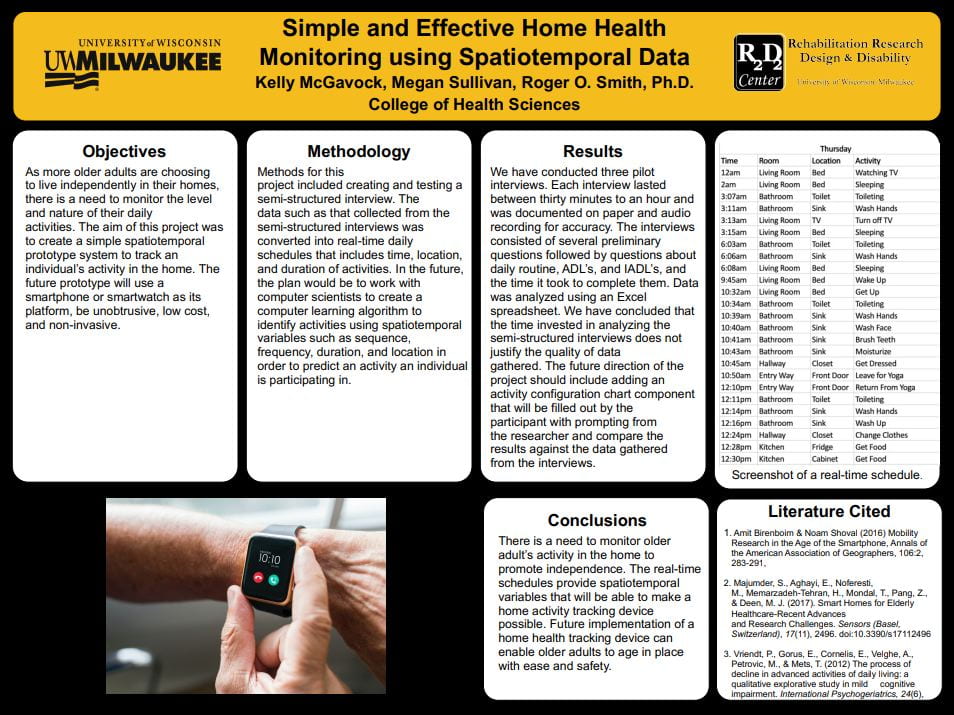Kelly McGavock, “Simple and Effective Home Health Monitoring Using Spatiotemporal Data”
Mentor: Roger O. Smith & Nathan Spaeth, Occupational Science & Technology
As more older adults are choosing to live independently in their homes, there is a need to monitor the level and nature of their daily activities. The aim of this project is to create a simple spatiotemporal prototype system to track an individual’s activity in the home. The future prototype will use a smartphone or smartwatch as its platform, be unobtrusive, low cost, and non-invasive. Methods for this project included creating and testing a semi-structured interview. The data such as that collected from the semi-structured interviews will be converted into real-time daily schedules that will include time, location, and duration of activities. In the future, we plan to work with computer scientists to create a computer learning algorithm to identify activities using spatiotemporal variables such as sequence, frequency, duration, and location in order to predict an activity an individual is participating in. We have conducted three pilot interviews and are in the process of analyzing the data. We are anticipating that the time invested in analyzing the semi-structured interviews may not justify the quality of data gathered. We may change our direction to include adding an activity configuration chart component that will be filled out by the participant with prompting from the researcher and compare the results against the data gathered from the interviews.
Click the thumbnail below to open the full sized poster in a new tab.

Thank you for sharing your work! This topic feels especially relevant as we navigate limited doctor-patient interactions during this time of social distancing–what a rich time it would be to collect the data you’ve identified as meaningful to inform healthcare practice! I appreciate your analysis of both the data you collected as well as the process you used to collect it. I would have liked to learn more about some of the content of your ‘semi-structured interviews’ — what were some of the firm pieces, where did you choose to pivot in the line of questioning and how did you make that choice? Finally, I like that you ended your conclusions with the value statement that this work all exists to support folks in ‘aging in place,’ something many of us wish to be possible for members of our families! Great work here!